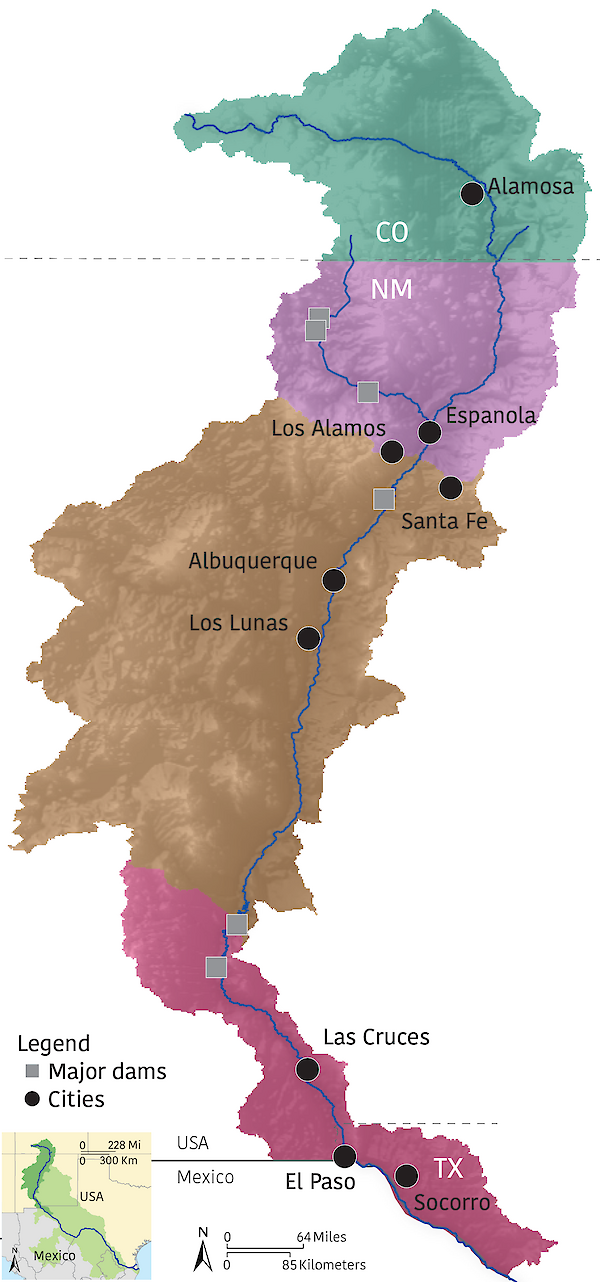 The Rio Grande is a unique and special river, and its watershed has been a home for people for thousands of years. Native peoples such as Native American tribes, Pueblos, and Spanish acequias have relied on the river for water, food, and shelter. In this region these groups include the Acoma, Apache, Mescalero Apache, Cochiti, Isleta, Ysleta del Sur, Jemez, Jicarilla Apache, Laguna, Nambé, Navajo, Ohkay Owingeh, Picuris, Piro, Pojoaque, Sandia, San Felipe, San Ildefonso, Santa Ana, Santa Clara, Kewa, Taos, Tesuque, and Zia. The Rio Grande’s headwaters are in the Rocky Mountains of Colorado and the river flows through New Mexico, down into Texas and Mexico before emptying into the Gulf of Mexico. The river is ecologically a montane-desert river that has experienced wet and dry cycles periodically over the years. The range of natural features of the river and the diversity of ecosystems and habitats supports a plethora of plants and wildlife communities. The Rio Grande is one of the five longest rivers in the US, and is an American Heritage River and a Wild & Scenic River. Major challenges for the river are droughts, climate change, and population pressure.
The Rio Grande is a unique and special river, and its watershed has been a home for people for thousands of years. Native peoples such as Native American tribes, Pueblos, and Spanish acequias have relied on the river for water, food, and shelter. In this region these groups include the Acoma, Apache, Mescalero Apache, Cochiti, Isleta, Ysleta del Sur, Jemez, Jicarilla Apache, Laguna, Nambé, Navajo, Ohkay Owingeh, Picuris, Piro, Pojoaque, Sandia, San Felipe, San Ildefonso, Santa Ana, Santa Clara, Kewa, Taos, Tesuque, and Zia. The Rio Grande’s headwaters are in the Rocky Mountains of Colorado and the river flows through New Mexico, down into Texas and Mexico before emptying into the Gulf of Mexico. The river is ecologically a montane-desert river that has experienced wet and dry cycles periodically over the years. The range of natural features of the river and the diversity of ecosystems and habitats supports a plethora of plants and wildlife communities. The Rio Grande is one of the five longest rivers in the US, and is an American Heritage River and a Wild & Scenic River. Major challenges for the river are droughts, climate change, and population pressure.
